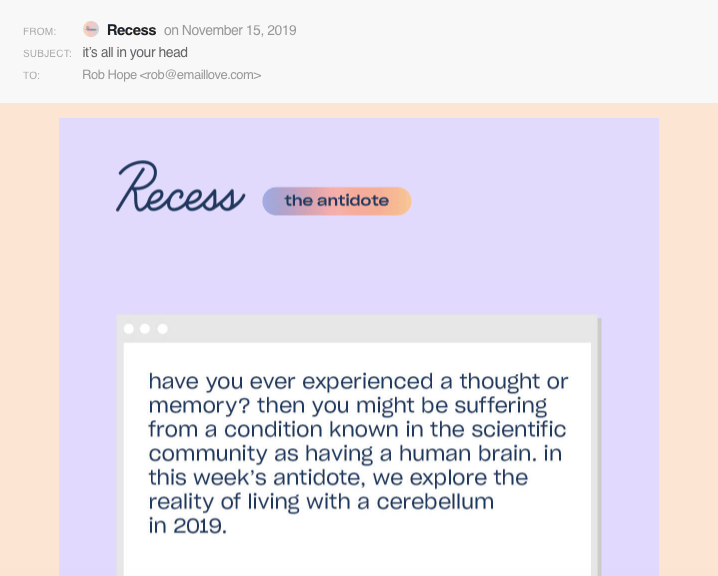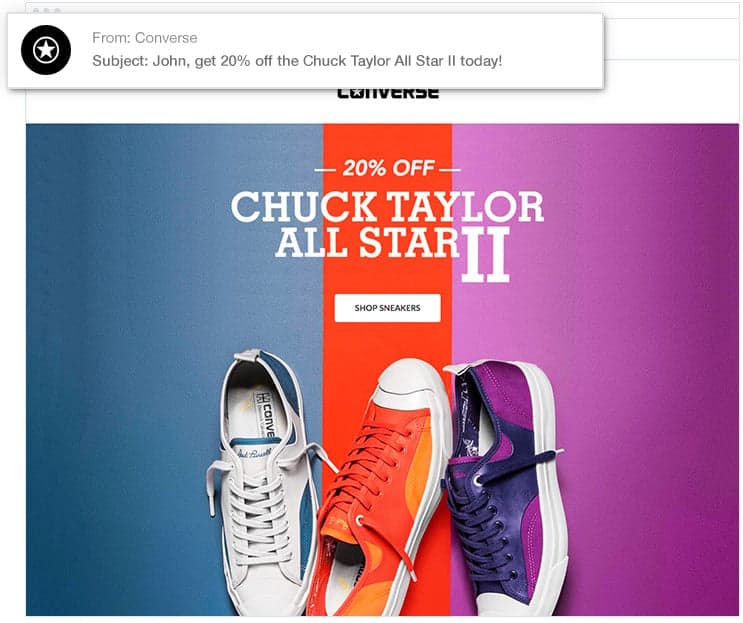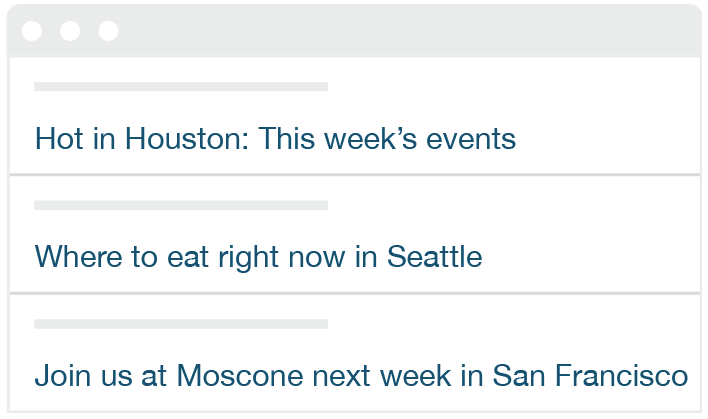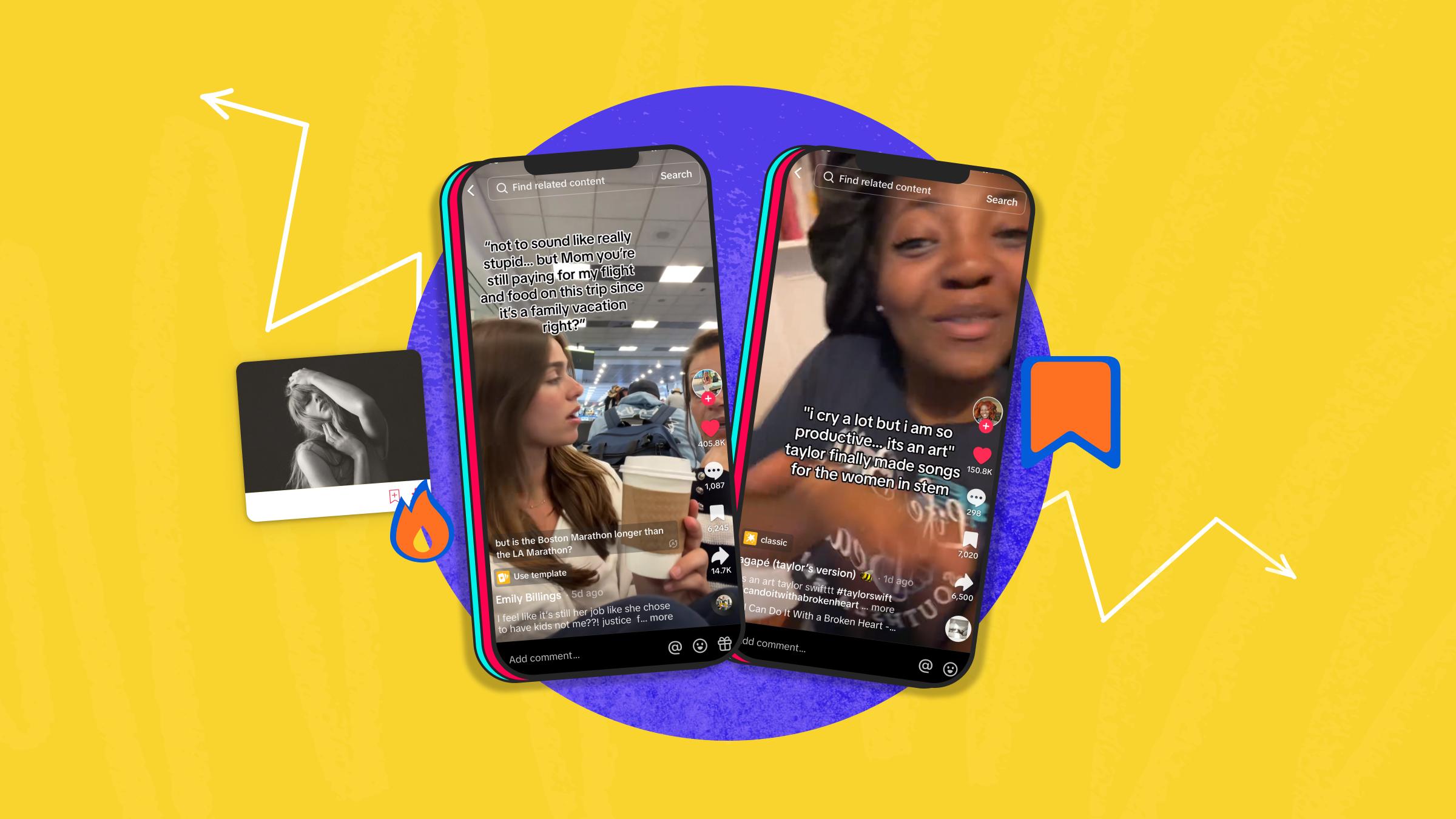Improve your email open rate with 5 smart ways to optimise your subject lines, from personalization to segmentation.

A subject line can make or break an email marketing campaign. It can motivate readers to open an email, ignore it or delete it straight away. Put simply – a good email subject line is the best way to make a great first impression, and ensure that your email is as clickable as possible.
Email Subject Line Statistics
After you’ve set up your your email delivery, the next thing to master is the subject line. Subject lines are the very first thing people see when they check their inboxes. Email open rates drastically depend on the subject line – its length, degree of personalization, and its relevance. Did you know that 69% of people move emails to spam after seeing the subject line, while another 47% read emails only if the subject line seems appealing?
Compelling stuff!
Depending on the number of words in a subject line, the actual open rate can differ greatly:
- 0 – 5 Words – 16% Open Rate
- 6 – 10 Words – 21% Open Rate
- 11-15 Words – 14% Open Rate
- 16 – 20 Words – 12% Open Rate
- 21 – 25 Words – 9% Open Rate
Additionally, readers tend to click more on emails that are addressed to them directly. According to Invespcro, emails including a recipient’s name have an open rate of 18.3%, whereas emails without a name have an open rate of just 15.7%.
How to Optimise Email Subject Lines
So, how do you craft a subject line that is unique, appealing and super clickable? Let’s explore some methods for creating a subject line that actually converts.
1. Generate Curiosity
People are naturally curious. We are fascinated by interesting facts, trends, and mind-blowing statistics. The right subject line will evoke that curiosity, and encourage recipients to open the email.
Some good examples of this include:
- One skill that is a must for business analysts
- The #1 present that all mums want for Mother’s Day
- Five money habits that will make you richer
Another option is to use a question to spark curiosity. Whenever choosing a question for an email’s subject line, remember to address the question within the email while providing further teasers, prompting them to visit the blog for more details or information. Finally, don’t forget to add a CTA such as “Read More” for readers to click on.
There’s no doubt that evoking curiosity is a great way to increase conversions, open and click-through rates, and earn more website traffic.
2. Offer a Great Deal
Everyone loves a bargain: two for one, 40% off the second pair, a free coupon for your next purchase. They might not need a second pair of winter boots, but a 40% discount is tempting. Offer a sense of urgency, and you are almost certain to get new customers on board. For example:
- Lee jeans with a 30% discount, today only
- Antony, enjoy 25% off your winter favorites this weekend
- One day of complimentary delivery on all your purchases
One-time offers, regular discounts, and weekly sales work perfectly for subject lines. Use them solely or experiment with the “fear of missing out” (FOMO), giving people a deadline to act on the deal which is soon to expire. Whenever there is a sale, things tend to sell out pretty fast, especially when we’re talking about a limited-time offer. Readers will be encouraged to act immediately to catch a good deal and avoid scarcity.
3. Experiment With Personalization
Being personal with people always pays off. You are able to build trust with recipients and create long-term relationships, not to mention increased conversions and CTRs.
Emails starting with “Dear valued customer” don’t resonate as much as those which address the recipient with their name. It’s the same with subject lines. If you have collected customer’s personal information, including their name and surname, there’s no obvious reason for you not to use them whenever you are creating a newsletter.
Personalized emails make recipients feel more valued, and help them to connect your company to this pleasant experience. But using names is only one way to implement personalization.
Dates, location, readers’ preferences are all things that make a difference. Send emails on readers’ birthdays, offer them a discount, or gift an add-on to their next purchase.
Personalization can also be about what you don’t send. For example, don’t send information about new winter clothes to those experiencing summer in Australia, or offer great deals on swimming suits for readers in the middle of a Canadian winter, and don’t send vegetarians offers with meat, and vice versa.
Here are some ways you can use customers’ personal details to your benefit:
- Alice, choose your perfect summer look
- Happy Birthday, John! Enjoy 50% off your summer favorites!
- Brian, are you in? Everything you love in one place
- We know you love chocolate. New flavors hand-picked for you
- How’s the weather in London? New winter collection is already in stock
You may end up even growing your email list if you consistently delight your email subscribers with such approaches. You can track what people are searching for, and offer relevant information and hand-picked deals to create a personal connection between you and your readers.
4. Get Rid of Long Subject Lines
Just as a newsletter has a maximum email size, subject lines have a maximum amount of words to ensure clickability. As we’ve already seen from the statistics, 6-10 words are proven to deliver better open rates.
Long subject lines also aren’t optimized for mobile devices. While you might want to evoke curiosity, cut off text can actually evoke irritation: “Great selection from bespoke brands from all over the world for men’s…”. Men’s what? Shoes? Clothes? Your recipients should be able to clearly understand what it is that you offer and click on the email to act further.
Whenever you’re struggling to write a concise subject line, get rid of the words that don’t matter. “Your order is packed for delivery” looks far better than “Your order #098765432 is packed for delivery”. Make it short and memorable, for example:
- “Your weekly books selection” instead of “Check out your weekly books selection inside”
- “Earn a Sustainability and Development Certificate” instead of “Start now! Earn our certificate from the University of Michigan with no application”
- “Become an organizational leader” instead of “Gain analytical skills! Become an organizational leader with a certificate from Tufts University”
Another thing to mention is to make use of experimental typography. As many people are now accessing their inboxes from a number of different devices, selecting email-safe fonts is crucial to ensure that people can not only read your carefully crafted subject line, but also see it as text and not as unreadable symbols.
5. Apply Segmentation
When talking about personalization, you might have noticed that it calls for detailed segmentation, by gender, location, preferences, relationship status, etc. Segmentation is, first of all, needed to send out emails that align with customer’s needs and expectations. There is no benefit in causing recipients confusion and making them move all your emails to spam.
No one wants to receive a list of top-rated steakhouses when they’re vegetarian, or get frustrated receiving honeymoon recommendations when they’re single. You can select the best newsletter template possible for your email, but an irrelevant subject line will spoil the whole experience.
Use the details you have and segment your subscribers accordingly. Check how they have filled in the forms, consider the industry they work in, or run surveys to find out more about their interests. In email marketing, segmentation helps to further personalize readers’ experiences, avoid confusion, and craft the right subject lines to get increased click-through rates.
Key Takeaways
There are many elements to consider when working on a campaign in email marketing: from selecting email marketing templates to ensuring newsletter deliverability, from crafting a welcome email to creating a concise subject line that makes an email stand out in the inbox, from avoiding the spam folder to improving the email sender reputation.
While choosing a subject line may seem easy, readers won’t open an email with a subject line that isn’t relevant or doesn’t resonate. When crafting your next subject line, remember to evoke curiosity, personalize the copy, and keep it short. And, if you have an offer, don’t forget to include it in the subject line!
While you’re here, don’t forget to check out these 20 Responsive Newsletter Templates for Your Business, or these 10 Click-Worthy Email Marketing Trends for 2021!
Guest Author: Andriy Zapisotskyi
Andriy is a Growth Manager at Mailtrap, a product that helps people inspect and debug emails before sending them to real users. He has over five years of experience in the field of marketing & product. Andriy loves to network with people. Running is his hobby and he enjoys discovering new places. You can connect with Andriy via Linkedin or Facebook.








